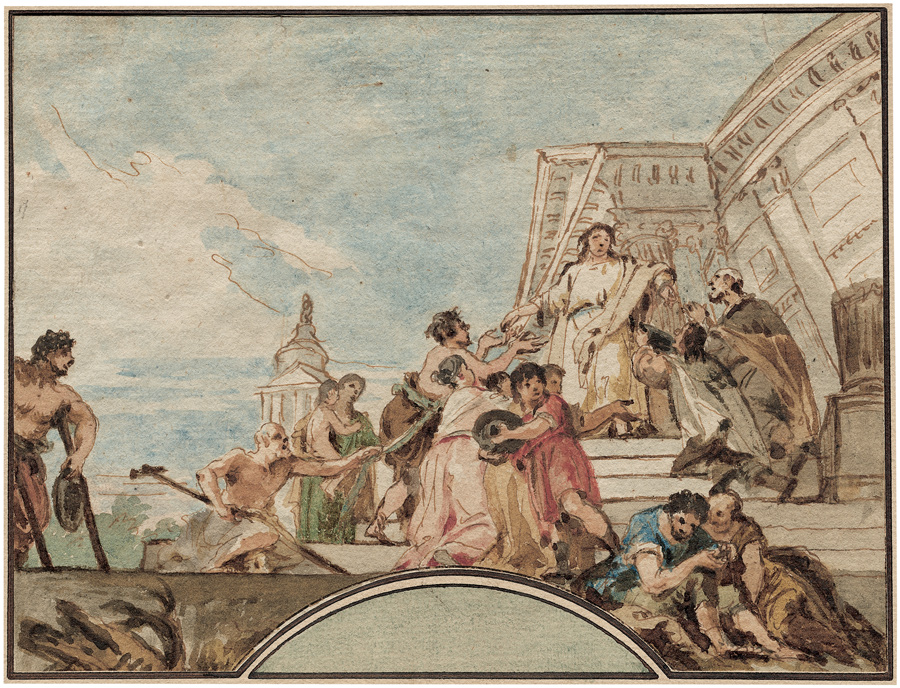Loading the page ...
Georg Anton Urlaub
(1713 Thüngersheim – 1759 Würzburg)
The Institution of the Rosary by Saint Dominic. Watercolor over pen and brown ink. 13.1 x 17.7 cm. Ca. 1750.
Georg Anton Urlaub was born into a family of painters, active since the seventeenth century in Franconia. He was trained first by his father Georg Sebastian Urlaub (1685–1763), after which he enjoyed the protection of one of the most powerful and influential art patrons of his time, the prince-bishop Friedrich Karl von Schönborn, who sent him for further studies to the academy in Vienna in 1737. In the fall of 1741 Urlaub returned to Würzburg, where he undertook the painted decorations for the prince-bishop’s residence. A year later he was appointed court painter. Apparently the situation in Würzburg was ultimately too restrictive for the young artist, however, and in 1744 he hastily, and much to the disapproval of his mentor, left for Bologna, where he studied between 1745 and 1747 at the Accademia Clementina. In 1749 we find the artist in Venice, where he met Giovanni Battista Tiepolo and made copies after the latter’s works. Around 1750–51 Urlaub returned to Würzburg, possibly accompanied by Tiepolo and his sons, who were commissioned by the prince-bishop Karl Philipp von Greiffenklau to design the fresco decorations in his residence. Close connections to the Tiepolo family are documented for this period since Urlaub had free access to their studio and was allowed to see the preparatory studies and plans for this monumental project. (See Georg Anton Urlaub. Ein fränkischer Maler im Banne Tiepolos, exh. cat., Mainfränkisches Museum, Würzburg 1996, pp. 13–14.)
Our sheet, which most likely served as a preparatory study for a wall or ceiling painting, clearly documents the influence on Urlaub’s work of Giambattista Tiepolo. The image shows the Institution of the Rosary by Saint Dominic and is almost a paraphrase of a masterpiece from Giambattista’s mature period, the ceiling decoration in the Gesuati Church in Venice, executed between 1737–39 (fig. 1). The iconography, as well as the compositional structure of the sheet, which shows Saint Dominic surrounded by the decrepit and poor in front of an extremely foreshortened temple architecture is much indebted to Tiepolo’s model. The stocky figure type with the distinctive dark hair is, on the other hand, more typical of Urlaub’s own style. In contrast to the luminous coloration of the Tiepolos, Urlaub’s design here is much more subdued and earthy in tone. Urlaub’s ceiling painting in the Church of St. Martin and St. John of Nepomuk in Königheim conveys a vivid picture of how the final version of a study like ours might have looked.
